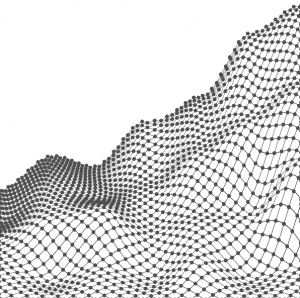The field of robot vision guidance is developing rapidly. The benefits of sophisticated vision technology include savings, improved quality, reliability, safety and productivity. Robot vision is used for part identification and navigation. Vision applications generally deal with finding a part and orienting it for robotic handling or inspection before an application is performed. Sometimes vision guided robots can replace multiple mechanical tools with a single robot station.
For Robots to function well in the physical world, they need a decent pair of eyes. Usually, this job is taken care of using LIDAR (Light Detection and Ranging). — a technology that bounces light off nearby surfaces to create a 3D map of the world around it. LIDAR is similar to a radar in the basic mechanics, but as radar uses radio waves, LIDAR uses light, making it much more accurate. The accuracy gives the robot the ability to pick out individual leaves on trees, or tract cyclists pedestrians.
However, LIDAR systems are also bulky and expensive. High-end models costs tens of thousands of dollars, and even the smallest new systems are the size of a hockey puck.
Because the sensor is mechanical, spinning around constantly, it is rather large. The lasers can build a map of up to 360-degrees. However, the bulkiness of the LIDAR limits the refresh rate of the image. The sensor can only know where something is when it’s bouncing light off of it. Though it can accurately detect where an object is based on its past location, direction of travel, and speed, it’s still has blind-spots.
A solution to the bulky LIDAR may be on the horizon. Researchers from MIT and DARPA are working on a new version that shrinks the light-bouncing apparatus onto a chip that’s smaller than a grain of rice.
Writing for IEEE Spectrum, researchers Christopher Poulton and Michael Watts claim that their prototype sensors “promise to be orders of magnitude smaller, lighter, and cheaper than LIDAR systems available on the market today.” They could be the eyes of future robots.
Silicon photonics is a new technology that could be the key to this development. Engineers would create miniature circuits that will guide and steer light on a microscopic level. Being assured that the lenses in the new technology will promise the best accuracy for imaging. When choosing UKA for the design, you will know that your lens is developed and manufactured by one company.
Poulton and Watts compare it to the fabrication of microchips, which shrunk electronic systems that used copper wire and components onto ever-smaller transistors. The end result is a LIDAR sensor that fits on a 0.5 millimeter by 6 millimeter chip, and which could cost as little as $10 to manufacture at scale. These chips have a number of limitations, including a relatively narrow field of view and a short range (currently, they can only “see” distances of two meters), but those involved say these properties could be improved relatively quickly. “We hope to achieve a 10-meter range within a year,” write Poulton and Watts. “We believe that commercial LIDAR-on-a-chip solutions will be available in a few years.”
The end result could be less expensive sensors that would do for machine vision what mobile processors have done for machine computation. This doesn’t mean that mechanical LIDAR systems would lose their usefulness, as they are tremendous for their long-range accuracy. Solid state LIDAR chips could give depth-sensing abilities to a range of other products. Poulton and Watts suggest placing their chips on a robot’s fingers so it can “see what it is grasping,” but the technology could also find its way into the next-generation of AI-powered toys, 3D-mapping smartphones, and autonomous drones.
Universe Kogaku designs and manufactures optical lenses for LIDAR, security, high tech and electronic applications. We stock 1000’s of standard lens assemblies and can custom design a solution for scanners, CCTV, CCD/CMOS, medical imaging, surveillance systems, machine vision and night vision systems.